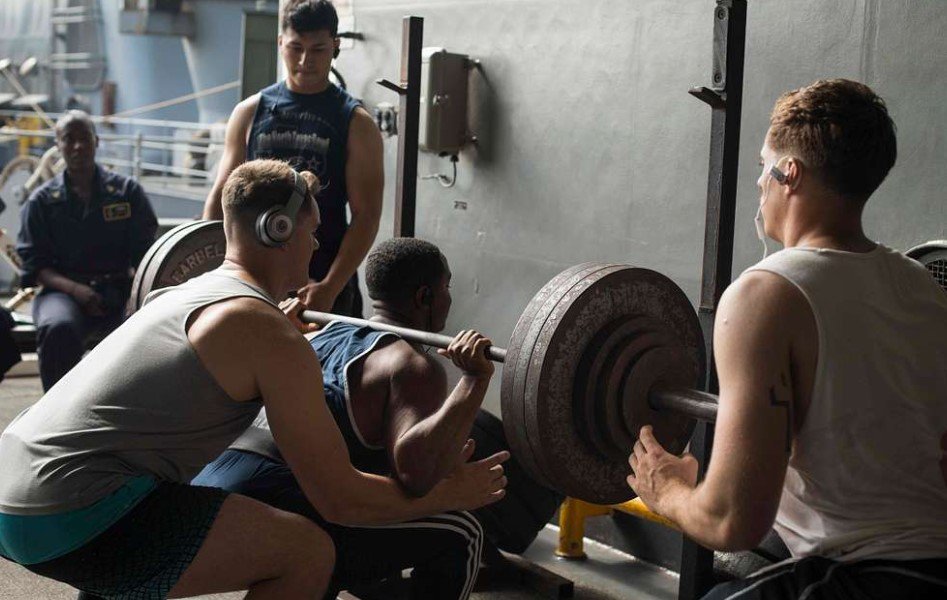Squatting is one of the most effective and popular exercises for building strength, muscle mass, and power in the lower body. It is also a complex and challenging movement that requires proper technique, mobility, and safety precautions. One of the best ways to ensure a safe and successful squat is to have a spotter or someone who can assist you during the exercise.
However, spotting a squat is not as simple as it may seem. It involves communication, coordination, and skill from both the squatter and the spotter. In this article, we will explain how to Spot Squat. By the end of this article, you will be able to spot a squat confidently and effectively.
What is Squat Exercise?
A squat is a common exercise that involves lifting a heavy weight on your shoulders and lowering your body until your thighs are parallel to the floor. It is important to have a spotter or someone who can assist you, when you perform a squat, especially if you are lifting close to your maximum weight or trying to set a new personal record. A spotter can help you avoid injury, boost your confidence, and assist you if you get stuck or lose balance.
How to Spot Squat?
A spotter is someone who assists the lifter during the squat, either by helping them unrack and rack the barbell, or by supporting them if they struggle or fail to lift the weight. A good spotter can also provide feedback and encouragement to the lifter.
But how do you spot a squat properly? Here are the steps to follow:
Step 1: Communicate with the lifter
Before you spot a squat, you need to communicate with the lifter to establish a mutual understanding of expectations. Different lifters have different preferences and needs, so you should ask them:
- How many repetitions do they plan to perform
- If they want help with unracking and racking the barbell
- If they want you to touch the bar or their body during the lift
- If they want you to give them cues or encouragement
- If they have a signal for when they need your assistance
You should also make it clear to the lifter that they should stay with the barbell if they fail the repetition, and not try to dump it forward or backward. This can prevent injuries to both of you and damage to the equipment.
Step 2: Stand behind the lifter
Once the lifter is ready to squat, you should stand behind them with enough space between you and them. You should be close enough to reach them quickly, but not so close that you interfere with their movement or breathing.
You should also pay attention to the plates and ensure that they are secured on both sides of the barbell with collars.
Step 3: Prepare your arms and posture
As the lifter steps back from the rack and sets their feet in their squat stance, you should reach your arms forward and hover them just below their armpits or lats. You should not touch them unless they ask you to or they need your help.
You should also adopt a similar posture to the lifter, with your feet shoulder-width apart, your knees slightly bent, and your back straight. This will allow you to move with them and react quickly if needed.
Step 4: Descend with the lifter
As the lifter begins to squat down, you should follow their movement and descend with them. You should keep your eyes on the bar and the lifter’s body, and be ready to intervene if they lose balance, form, or speed.
You should not talk to the lifter or distract them during the lift unless they want you to. You should also not touch the bar or the lifter unless they are visibly struggling or they signal you to.

Step 5: Ascend with the lifter
As the lifter reaches the bottom of the squat and starts to rise up, you should also ascend with them. You should continue to monitor their performance and be prepared to assist them if they stall or fail.
If the lifter needs your help, you should place your hands under their armpits or lats and gently push them up. You should not pull the bar or lift it for them, as this can cause injury or imbalance. You should also not push them too hard or too fast, as this can rob them of the benefits of the lift.
Step 6: Catch the lifter if necessary
If the lifter fails to complete the lift and cannot stand up, you should catch them and help them lower the bar back to the rack or the safety pins. You should use a mixed grip on the bar, with one hand over and one hand under, and lift it off their back.
You should also communicate with the lifter and make sure they are okay. You should not blame them or make them feel bad for failing, as this can hurt their confidence and motivation.
Step 7: Walk with the lifter back to the rack
If the lifter completes the lift successfully, you should walk with them back to the rack and help them re-rack the barbell if needed. You should also congratulate them and give them feedback or praise if they want it.
You should not walk away from the lifter until they are safely done with the lift and the barbell is secured on the rack.
Conclusion
Spotting a squat is a skill that requires attention, communication, and coordination. By following above mentioned steps, you can be a good spotter and help the lifter perform the squat safely and effectively. You can also improve your own squatting technique and knowledge by observing and assisting the lifter. Spotting a squat can be a rewarding and enjoyable experience for both of you.




































